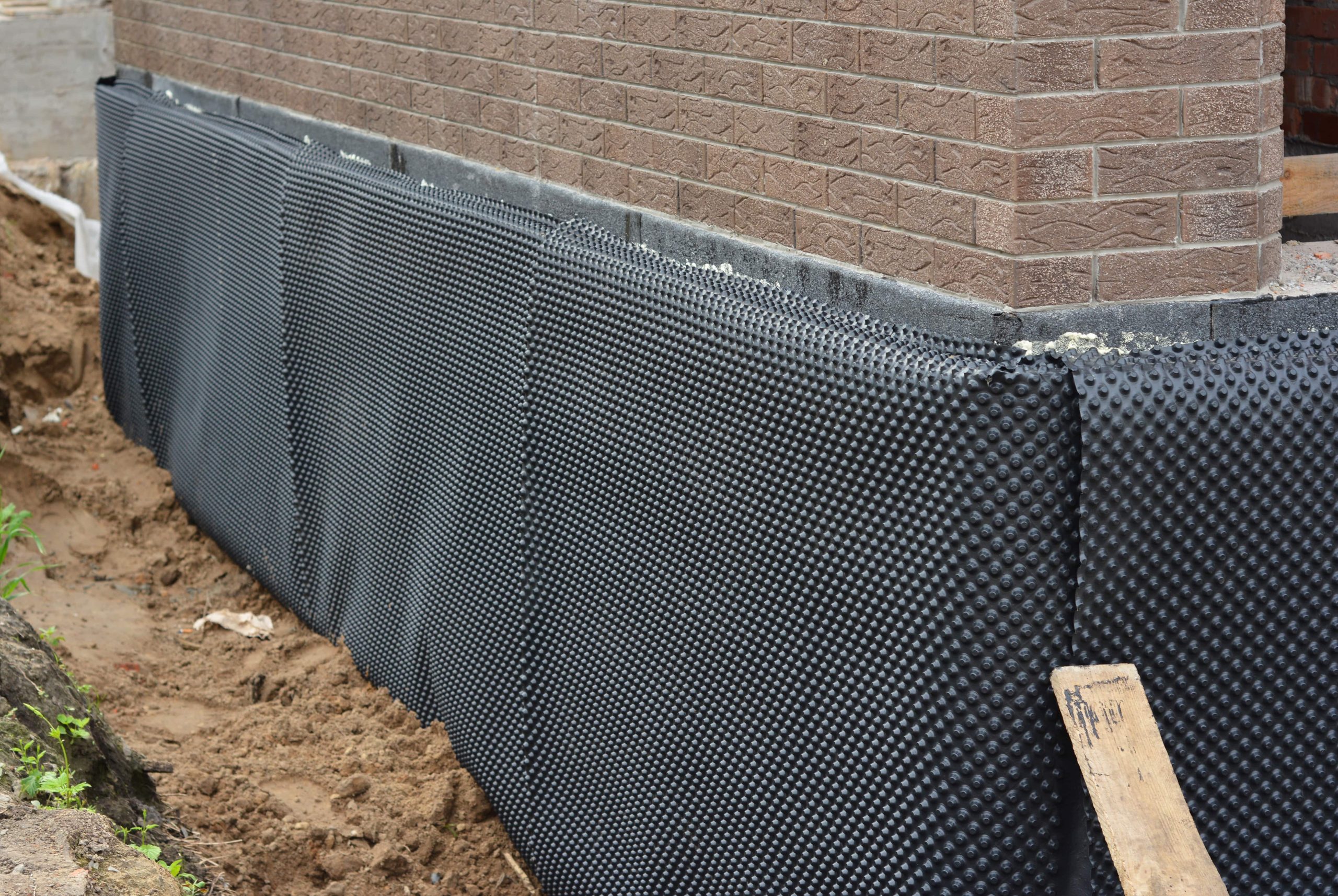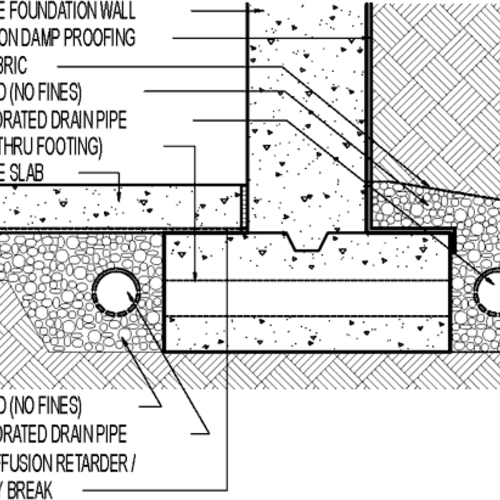Prevent structural damage with proactive damp removal newcastle
Prevent structural damage with proactive damp removal newcastle
Blog Article
Recognizing the Relevance of Damp Proofing in Preventing Structural Damages
Damp proofing functions as an important protection against moisture seepage in buildings. This protective measure can stop considerable architectural damage, yet many homeowner stay unaware of its relevance. Acknowledging the indicators of moisture and understanding the different options available can be vital. However, neglecting moist proofing can bring about serious effects. What are the certain risks and options that residential property owners should take into consideration?
What Is Damp Proofing and Just How Does It Work?
Moist proofing acts as a necessary barrier versus dampness breach in structures. mould treatment newcastle. This procedure includes applying specific materials and techniques to stop water from permeating wall surfaces, floorings, and various other architectural components. Normally, moist proofing can be achieved with the setup of damp proof membranes, layers, or making use of specialized sealants.These techniques work by producing a protective layer that prevents dampness movement, making sure that the indoor environment continues to be dry and healthy. Damp proofing is particularly essential in areas susceptible to high moisture or groundwater, as it helps maintain the honesty of the structure over time.Moreover, effective moist proofing adds to power effectiveness by avoiding warmth loss connected with wet environments. By resolving possible wetness concerns prior to they escalate, damp proofing functions as an aggressive action in protecting structures from the damaging effects of water damage, inevitably prolonging their lifespan and keeping their value
Usual Indicators of Moisture in a Structure
Wetness concerns within a building can manifest with several obvious indicators that suggest the presence of dampness. One noticeable indicator is the appearance of water discolorations on ceilings or wall surfaces, which usually indicates dampness seepage. Additionally, peeling or bubbling paint can recommend that excess moisture is trapped under the surface, leading to wear and tear. Another common indication is the visibility of mold and mold, which flourish in wet problems and can typically be identified by their musty smell. Moreover, a surge in humidity levels can create condensation on home windows and other surface areas, highlighting dampness troubles. Distorted or irregular flooring may signal underlying dampness that endangers structural integrity. Acknowledging these indications early can assist alleviate possible damage and maintain a secure living environment. Routine examinations and prompt action are necessary in addressing dampness problems prior to they escalate.
The Dangers of Neglecting Damp Proofing
Overlooking moist proofing can result in considerable hazards to a building's architectural honesty, as dampness accumulation may weaken foundations and wall surfaces. In addition, long term dampness produces an atmosphere favorable to mold development, posing serious carcinogen to passengers. Addressing these threats is important for ensuring both security and long life of the home.
Structural Integrity Dangers
When homeowners overlook the significance of effective moist proofing, they expose their properties to substantial architectural honesty risks. Extended dampness seepage can bring about the advancement of mold, which compromises foundational aspects and can compromise total stability. In addition, excess moisture can erode concrete and brickwork, resulting in splits and architectural failings. Timber elements are particularly at risk; they can rot and lose load-bearing capability, presenting significant risks to the structure's structure. Unattended wet problems may draw in bugs, such as termites, which additionally exacerbate structural wear and tear. Eventually, ignoring wet proofing actions can lead to costly fixings and potential security risks, underscoring the vital role of aggressive moist management in protecting the integrity of domestic properties.
Health Hazard Concerns
Just how can a relatively minor oversight bring about severe health and wellness dangers? Neglecting wet proofing can create a setting helpful to mold growth, which poses significant health and wellness dangers. Mold and mildew spores can activate allergies, breathing problems, and other health and wellness complications, particularly in susceptible populaces such as youngsters, the elderly, and people with pre-existing problems. Furthermore, relentless moisture can bring in insects like insects and rodents, which bring diseases that better jeopardize health. The existence of moisture also adds to a decrease in interior air quality, exacerbating asthma and other breathing disorders. Subsequently, the failure to resolve moist issues not only intimidates architectural honesty yet also threatens the well-being of passengers, highlighting the essential need for effective damp proofing measures.
Different Kinds Of Damp Proofing Solutions
Although different factors can add to damp concerns in buildings, choosing the appropriate moist proofing solution is important for preserving structural stability. Numerous options are available, each tailored to specific conditions.One common remedy is a damp-proof membrane layer (DPM), generally made from polyethylene or asphalt, which is installed in wall surfaces and floors to stop dampness access. An additional choice is damp-proof programs (DPC), which are layers of water-proof product positioned within walls to block climbing damp.Chemical damp proofing involves infusing waterproofing chemicals into wall surfaces to develop an obstacle versus dampness. Furthermore, external treatments such as tanking, which involves using a water-proof layer to the outside of structures, can be effective in preventing water penetration.Each solution has its benefits and is picked based upon the structure's specific problems, environmental conditions, and lasting upkeep factors to consider, making certain perfect security against damp-related damage.

The Expense of Damp Damage vs. Avoidance
Comprehending the economic ramifications of wet damages compared to prevention highlights the importance of proactive procedures. The costs connected with wet damage can be substantial, including repair work to architectural elements, mold and mildew removal, and prospective health-related expenses. Home owners may deal with substantial economic strain if substantial damage happens, resulting in increased insurance costs and lost building value.In comparison, buying damp proofing remedies is typically much more affordable. Preliminary costs for avoidance techniques, such as mounting damp-proof membrane layers or improving drainage systems, are often surpassed by the lasting cost savings from staying clear of pricey repairs. In addition, protecting against wet issues can boost a building's general value and appeal, making it a wise financial investment. When reviewing the price of damp damage versus prevention, it ends up being clear that taking proactive steps can secure economic rate of interests and keep the honesty of the residential property over time.
Selecting the Right Damp Proofing Technique for Your Residential property
Which damp proofing approach is most ideal for a particular residential or commercial property typically depends upon various factors, including the building's age, existing moisture concerns, and regional ecological conditions. For older frameworks, conventional approaches such as bitumen membrane layers website or cementitious coverings may be more reliable, as they can provide a durable barrier against climbing damp. On the other hand, more recent buildings might take advantage of modern remedies like infused damp-proof courses, which are much less invasive and can be customized to certain dampness challenges.Additionally, residential properties in locations with high water tables or hefty rainfall might require advanced methods, such as tooth cavity wall water drainage systems or exterior waterproofing. House owners should also think about the certain materials made use of in their structure's building and construction, as some techniques may not work. Eventually, an extensive assessment by a professional can assist homeowner in choosing one of the most reliable moist proofing technique tailored to their special conditions.
Keeping Your Damp Proofing System With Time
Routine upkeep of a damp proofing system is crucial for ensuring its long-term effectiveness and shielding a residential or commercial property from moisture-related damages. Residential or commercial property owners need to perform regular examinations to determine any type of indicators of wear or concession in the moist proofing layer. This consists of checking for fractures, peeling paint, or mold growth, which may indicate dampness intrusion.Additionally, it is suggested to clean seamless gutters and downspouts regularly to avoid water buildup around the foundation. Reapplying sealants or membrane layers may be needed if wear and tear is observed.Engaging specialist services for routine assessments can additionally enhance the durability of the system. These specialists can supply understandings right into potential vulnerabilities and suggest timely repair services.
Regularly Asked Concerns
How Much Time Does Damp Proofing Treatment Last Prior To Needing Repairs?
The longevity of wet proofing therapy usually varies from 10 to 30 years, depending upon variables such as the method used, environmental conditions, and maintenance techniques. Regular assessments can assist figure out when repair services might be essential.
Is Do It Yourself Damp Proofing Effective Contrasted to Specialist Services?
The effectiveness of DIY moist proofing differs significantly. damp specialist newcastle. While some individuals may achieve sufficient results, expert services commonly ensure detailed solutions, leveraging competence and high quality products to avoid future problems more dependably than a lot of DIY efforts
Can Damp Proofing Improve Indoor Air Top Quality?
The concern of whether damp proofing can enhance indoor air quality occurs regularly. Efficient damp proofing minimizes dampness levels, thus reducing mold and mildew development and irritants, ultimately adding to a much healthier interior atmosphere for residents.
Exist Certain Laws for Damp Proofing in Different Locations?
Regulations for damp proofing differ by region, typically affected by neighborhood building regulations and ecological problems. Conformity assurances effective dampness control, safeguarding frameworks and advertising security, which highlights the need for adherence to these specific laws.

What Are the Long-Term Perks of Correct Damp Proofing?
The long-term benefits of proper damp proofing include improved architectural honesty, minimized upkeep costs, boosted interior air top quality, and raised home value. These advantages add to a healthier living environment and extended life expectancy of structures. Commonly, wet proofing can be attained with the installment of moist proof membrane layers, finishings, or the usage of specialized sealants.These techniques function by developing a safety layer that hinders wetness activity, ensuring that the indoor atmosphere remains healthy and completely dry. Moist proofing is particularly crucial in areas prone to high moisture or groundwater, as it helps keep the stability of the framework over time.Moreover, reliable moist proofing contributes to energy effectiveness by preventing warm loss associated with moist atmospheres. Disregarding moist proofing can lead to significant hazards to a building's structural integrity, as dampness accumulation might damage foundations and walls (damp removal newcastle). Different variables can contribute to damp concerns in structures, choosing the suitable moist proofing remedy is crucial for preserving architectural stability. Which wet proofing approach is most suitable for a particular home usually depends on numerous factors, consisting of the structure's age, existing moisture concerns, and local ecological conditions
Report this page